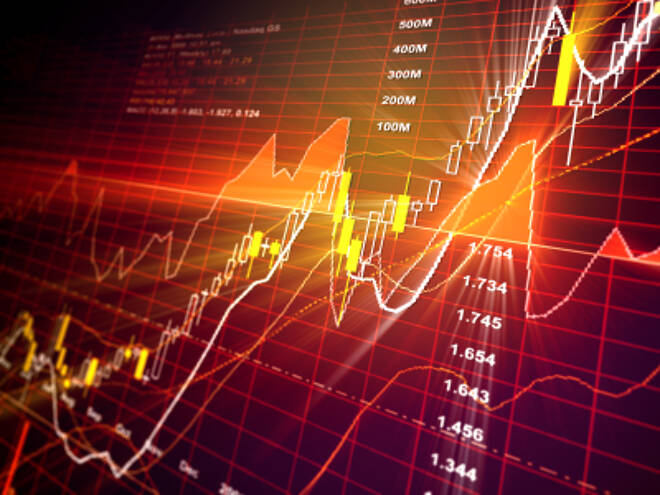Advertisement
Advertisement
Don’t Panic, Dovish Fed Policy Will Prevent Repeat of Last Year’s Correction
By:
Remember the steep break from October to late December? It was blamed on the Fed’s hawkish monetary policy. Stocks took off after the US and China started talking and the Fed turned dovish. The US and China never signed a deal, but the Fed held rates steady. Yet the S&P 500 Index and the NASDAQ Composite still hit new all-time highs.
A rise in trade and tariff tensions fueled the largest pullback in the global equity markets so far this year last week. By historical standards, the down move was modest despite some analysts already blaming President Trump for the next recession.
If you can’t stand the heat then get out of the kitchen. I can’t recall seeing so many negative comments about a market or an individual just weeks after U.S. markets hit all-time highs. It was definitely amateur week for some analysts, who seemed to take pleasure in feeding the bear with doom and gloom headlines. Some even used the term bear market.
Once again I think we’re going through the cycle where analysts race to be the one to “call the top” as if there was a prize for that.
Forget the long-term, the politics or the predicted doom and gloom, smart traders should embrace the volatility, no matter who causes it.
Dream Week for Short-Term Traders
This week was a dream for short-term or day-traders as volatility spiked to a four-month high. Traders were also driven by the headlines, which at times created a dramatic two-sided trade. Volatility can be your friend if you don’t abuse it. Heightened volatility should help improve your trading performance if you know what you’re doing in terms of risk and reward.
Stock traders should have enjoyed the week. How do you think gold, crude oil and currency traders feel after a week of lackluster movement? Their time is coming, however, because of the Laws of Volatility.
The Cboe Volatility Index, which tracks the level of worry in the market and is commonly known as the VIX, spiked to its highest level since January on Thursday. The measure of the 30-day implied volatility of the S&P 500 or the “fear gauge,” hit a fresh high of 23.38, its highest level since January 4.
President Trump Had a Hand in the Price Swings
If you made money last week by trading the intraday price swings, then make sure you thank the President, because his comments and actions fueled most of the volatility. Don’t blame him.
Trump’s surprise announcement of additional tariffs on China fueled the initial break in the stock market. The markets were driven lower in Asia and Europe and in the U.S. futures markets. However, when the U.S. markets opened on Monday, professionals saw value and they snapped up lower-priced shares.
Volatility and weakness continued on Tuesday, but once again bargain-hunters saved the day with a late session rally.
At a campaign stop in Florida on Wednesday evening, Trump ignited another wave of selling after he attributed his recent threat of increased tariffs to Beijing’s lack of commitment to the negotiating process. He said China, “broke the deal. They can’t do that, so they’ll be paying.”
Stocks rebounded from steep intraday losses on Thursday after Trump struck a more optimistic tone when asked if he would speak with Chinese President Xi Jinping.
“Well, he just wrote me a beautiful letter, I just received it, and I’ll probably speak to him by phone,” Trump said. The President also said it might be possible for China and the U.S. to strike a deal this week. “It’s possible to do it, they’re all here. The vice premier one of the most respected men one of the highest officials in China is coming,” he said.
On Friday, shortly before the cash market opening, Trump was at it again. This time making comments that erased the previous session’s gains that he created. Trump said in an early morning tweet storm there’s “absolutely no rush” on a trade agreement with China.
The major indexes recovered all of their earlier losses and finished higher for the session after Trump tweeted that the talks with China were “candid and constructive.” Additionally, Treasury Secretary Steven Mnuchin said China trade talks had ended for the day and were “constructive.” Chinese Vice Premier Liu He also said the talks went “fairly well,” according to reports.
Value, Volatility, Bargains
Remember the steep break from October to late December? It was blamed on the Fed’s hawkish monetary policy. Stocks took off after the US and China started talking and the Fed turned dovish. The US and China never signed a deal, but the Fed held rates steady. Yet the S&P 500 Index and the NASDAQ Composite still hit new all-time highs.
What this means is the Fed is more important to the stock market than the US-China trade deal. Yes, we could see setbacks and position adjustments, that’s just trading. Trump’s too smart to let this trade deal fall apart. His short-term decisions may cause a little pain, but his administration and the Fed aren’t going to let this turn into a recession.
The bottom-line: Watch for value if you’re an investor. Look for opportunity. It’s way to early to start looking for signs of a recession.
About the Author
James Hyerczykauthor
James Hyerczyk is a U.S. based seasoned technical analyst and educator with over 40 years of experience in market analysis and trading, specializing in chart patterns and price movement. He is the author of two books on technical analysis and has a background in both futures and stock markets.
Advertisement
